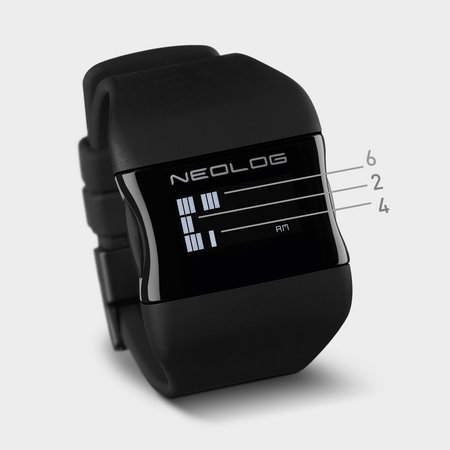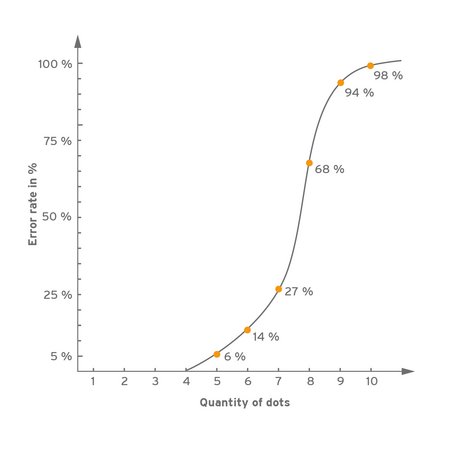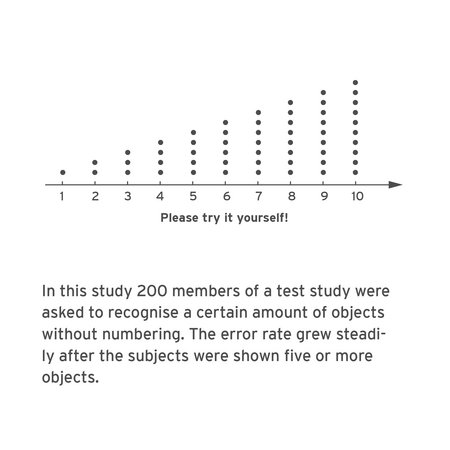This area is far less researched than the physical ergonomic of products. There are no one-fise-all patent solutions for this either. How people handle information, for example, is researched in perceptual and cognitive psychology. There is an important difference between what people see and what they later recognise, therefore the mental ergonomic is as important as the physical one. A simple example: even though when looking at a tree the plant projects thousands of individual leaves on a man’s retina, he does not see individual leaves but sees the tree in its entirety. When creating optimal mental ergonomics, the results of actual brain research have often proven useful for developing an interface design.
A practical application for mental ergonomics:
Imagine you have to depict the numbers 0 to 12 not in numbers but bars. Smaller numbers like 4 and 5 can be pictured easily and without mistakes. In bigger amounts more mistakes appear; the error rates increase in proportion to the visualised number. Divisions into smaller groups create a better outline and allow a faster and accurate readout. The neolog watch uses this simple principle and visualises time in its natural form. Even though it shows every minute it stays concrete and objective. The time is divided into hours, ten-minute steps and minutes. Thanks to groupings of three the time can be read out quite easily. Once the wearer gets used to it the display gives an unusual and instinctive grasp of time.
Are mental ergonomics the same for everyone? No.
Many of our features have been developed over centuries of evolution; people have certain common characteristics all over the world. But nonetheless the mental ergonomic is a flexible part in the creation of products, since every human being is the result of his or her individual experiences. No study in the world could gather all of that, it stays something deeply personal. The basis for these experiences lies in an individual’s biography and cultural background. At least the cultural aspect can be grasped. Just imagine designing a dining table for the Asian market. Then it would be good to know that people in these cultural circles prefer to sit on the floor while eating. To regard more personal aspects of course is far more complex and can only be guessed at. Next to the normal adjustment possibilities a subsequent flexible adaptation to the user´s liking plays an important role. Therefore measuring and regulation techniques for individual behaviour and a systematic adaptation in the design process are necessary. Good examples are newly developed music apps. These small programs learn more and more about the music preferences and habits of their users. This allows for the creation of individual playlists and a generation of suggestions for similar music pieces. It is a highly possible that those apps will one day know us better than we do ourselves.



